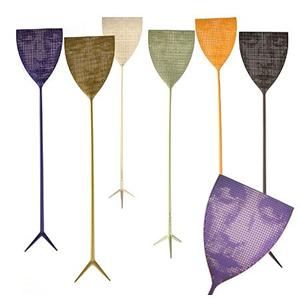In class we have been discussing the various projects within our small group of 7 and how they sit within the real world. Several people are undertaking ‘art’ style projects where they are concentrating on aesthetics. Others are completing projects based on a more design studio system where they appear to be completing projects for a client. It was discussed that both myself and Brittany are completing personal projects which, in the long term could be the start of a design practice or individual design methods for working. Could I work on water saving projects for a sustained period of time? The answer is yes… I think anyway. So I have begun to look at my project as a business. For starters I am purposely not blogging images of my work as a method of protecting my ideas. Further more on this idea, I arranged a meeting with Marcus Powe to discuss patenting. Patenting, Marcus assured me, is a long, involved and expensive process. Instead of heading down the path of patenting, Marcus provided me with a confidentially contract, which will protect my ideas sufficiently for now anyway. This contract will be presented to any person outside of RMIT when discussing or manufacturing my prototypes. The Holey water cup is coming along well. At this present stage I am busy reflecting on the work I completed looking into anthropometrics, and combining this with the organic feel that I have approached this project with. From my research, including clay testing, I am now working on what I am naming my ‘Pattern’. The pattern is the ultimate design of the Holey and will be presented to the various areas of production- plastic, ceramic and glass. I am predicting that the design will change between each material due to material constraints and manufacturing process. The pattern can be used by both left and right handed users. Where the original Holey had an off centred hole, the pattern has a central hole accessible for both grips. The pattern has a continuous lip/rim on the opposite side form the hole to comfortably support the rest of the hand. The pattern is symmetrical I am not entirely comfortable with the pattern being symmetrical, however, I know that the outcomes will all differ- the glass pieces will be less symmetrical and exist as ‘one’ off art works. It is important that I start with a symmetrical and basic design so that each outcome will exhibit the ‘essence’ of the original. I am currently completing the CAD model of the pattern and will have the piece 3D printed as soon as possible. From there I will be approaching manufacturers for production. In regards to the Holey cup I am also looking at the Indian Lota. The Lota is regarded by many as very good design in terms of the way it is held and used. The use of a lip, makes the Lota comfortable to hold.
The colander is also advancing nicely. After finishing a complete metal concept I became frustrated with attempting to accurately complete a CAD model. It then occurred that I needed to explore the design further- I have locked in the fact that:
a) The colander will exist in two pieces
b) The method of using (the ways in which the holes are arranged)
I had previously been locked into constructing the piece from spun metal, however after discussions with Soumitri, I am now exploring mixed materials. A large problem I had with a complete metal piece was the way in which the two components will connect. I am aiming to have a simple outcome and this includes no screws, glues or fixings. It was suggested to me that there are two options:
Originally I had only eyes for a minimalist approach: The entire piece completed solely from spun metal. The two components would joint together via male/female connections.
I am now looking towards a Migration approach and have begun to explore ways in which ‘things’ joint together. In particular, I am inspired by the way simple coffee plungers connect- the plastic base contains the glass ‘cup’ and the two stay together via the friction between the two materials. I have found many occasions where two components are ‘joined’ together via their differing material properties.

 When speaking of things with holes in such as colanders, I have come across the Dr.Scud Fly swatter from Philippe Starck, produced by Alessi. This appears to be a normal fly swatter, however on closer inspection there is a face on the swatter. why? Philippe starck has a great way of turning everyday household objects into livig characters- he injects humour into his designs. This is something that I would like to do for my designs this semester- add some humour to make them memorable… make people smile/think/talk.
When speaking of things with holes in such as colanders, I have come across the Dr.Scud Fly swatter from Philippe Starck, produced by Alessi. This appears to be a normal fly swatter, however on closer inspection there is a face on the swatter. why? Philippe starck has a great way of turning everyday household objects into livig characters- he injects humour into his designs. This is something that I would like to do for my designs this semester- add some humour to make them memorable… make people smile/think/talk.












